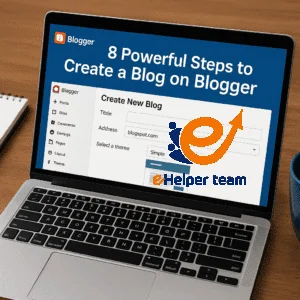The Anatomy of a Great Website
A website is what defines the scope of a running business and a unique and great website is what sets a business apart from its competitors. A great website can help you attract and retain customers, improve your online visibility, and increase your sales and revenue. So, what makes a website great? Let’s dive into the anatomy of a great website and take a closer look at how greatness is achieved.
The Anatomy of a Great Website
Functional Web Design
It is important to know that a website is not just about making it pretty and aesthetic. There’s a lot more that contributes to a great website.
The key ways that web design contributes to a great website are through usability and accessibility. It means that it should be easily understandable by potential users. This can involve things like creating clear navigation menus, using consistent design elements throughout the site, and making sure that important information is prominently displayed.
Any user with any disability should not be differentiated from the rest of the website users. Not only this but also, they should be able to use the website effectively and productively. This can be implemented by using alternative text for images and other multimedia content and ensuring that the site is compatible with screen readers, Also, make sure that the site is easy to use for people with mobility impairments.
Not only this but the website should also be visually appealing and engaging, with a clear and consistent visual identity that reflects the brand and message of the site. For this, you should choose the right colors, fonts, and other design elements and make sure that they are consistently used throughout the site.
Memorable Logo
Your brand’s character, ethics, and flair can be effectively conveyed through a skillfully crafted logo, thereby instilling a feeling of confidence and familiarity in your audience. People do not regard its importance and often overlook it. A logo is the face of your brand and it is something that makes you recognized among your audience. A logo that is expertly crafted can effectively express the personality, values, and style of your brand, fostering a sense of trust and familiarity with your visitors.
A great logo is usually designed as being simple, legible, and memorable. This makes it easier for your visitors to navigate your site and locate the information they need. Make your logo consistent across all of your branding materials so it creates a cohesive and professional look that will reinforce your message and build trust with your audience.
You should definitely invest in a great logo if you already don’t have one. If you need a professional and affordable logo the faster way then, you can consider creating one with an AI logo generator. A great logo can make all the difference in creating a strong brand identity that resonates with your target audience.
Attention Grabbing Header
Headers are often underestimated, but they play an integral role in creating a visually

appealing website structure. Headers refer to the text sections located at the top of a webpage, which serve a dual purpose of not only enhancing the aesthetics but also creating a visual hierarchy that assists users in understanding the structure of your content. You may use headers that are pretty clear, concise, and easy to read. This will make it easier to direct your visitors toward the most significant parts of your website such as call-to-actions, headlines, or menu items.
Utilizing appropriate keywords within your headings can assist search engines in comprehending the theme of your website, thereby enhancing the possibility of achieving a higher ranking in search outcomes. This makes them a vital part of search engine optimization. This can be especially important for sites that rely on organic traffic to drive business.
Engaging Body Text
A website body is the main part that visitors come for to your site and it keeps them engaged throughout. Your website’s body should be clear and concise. The audience doesn’t want to read through long blocks of text so it’s important to break up your content into smaller and digestible chunks. Use headings and subheadings to help guide visitors through the content, and use bullet points or numbered lists to highlight important information.
Make sure your content is relevant and informative. There is always a reason why people visit your website so make it convenient for them to find everything they need. You can use language that is easy to understand. Also, avoid jargon or technical terms that might confuse your audience.
Useful Landing Pages
A landing page is a standalone page designed to convert visitors into customers. It is usually used together with a marketing campaign to advertise what your website is mainly about. Hence, it should be made to target the specific needs of the audience. Landing pages should be easy to navigate and should have a clear call-to-action. This will encourage visitors to take action whether it is regarding making a purchase, signing up for a newsletter, or filling out a form. A well-designed landing page can help boost conversions and drive sales.
Informative Contact Page
Contact Us pages are often overlooked, but they’re crucial for building trust with your audience. Visitors might be eager to know how they can easily reach out to you in case they have any queries. Make sure your Contact Us page is easy to find with clear and concise instructions on how to get in touch. You can also use this page to showcase your customer service and provide helpful resources such as an FAQ or knowledge base.
Footer
It provides important information and links that users may need. This can include contact information, social media links, a site map, and copyright information. By including all this information in the footer it seems less cluttered for the visitors and everything becomes easily accessible for them in one place.
By working on the above-mentioned integral components of a great website, any business can create a great website that attracts and retains customers, improves online visibility, and generates sales and revenue.
Conclusion
These are some of the elements in the anatomy of great website design. If you are looking to create a responsive one for your business, then keep all these factors in mind. In the end, you need to focus on getting a B2B website designed that is professional and delivers your message on the first look.
Also: ChatGPT Models: Harnessing Artificial Intelligence for Innovation and Advancement
Best way that Reseller Hosting Program can Work with it
Top 3 Web Hosting For WordPress you can choose
The best web hosting companies advise you to host your site





